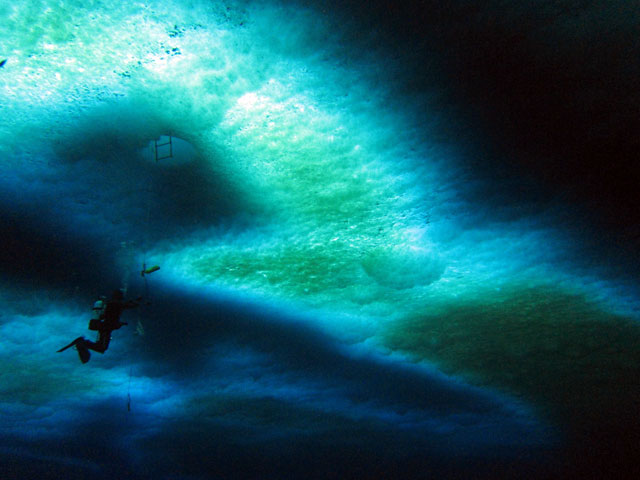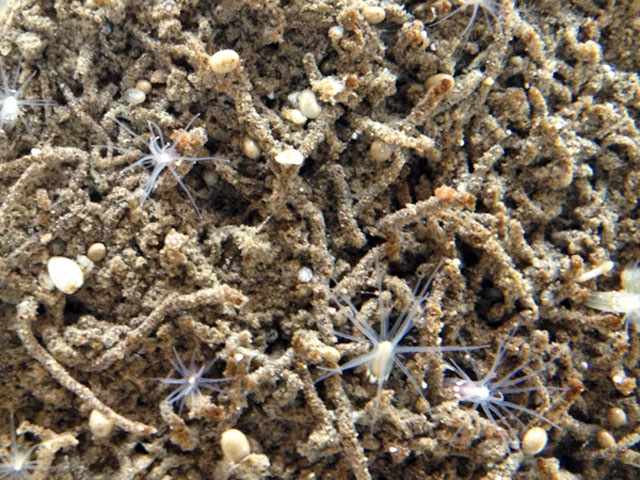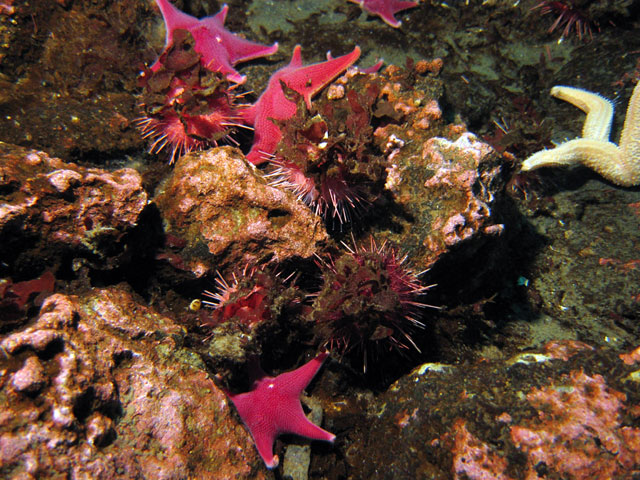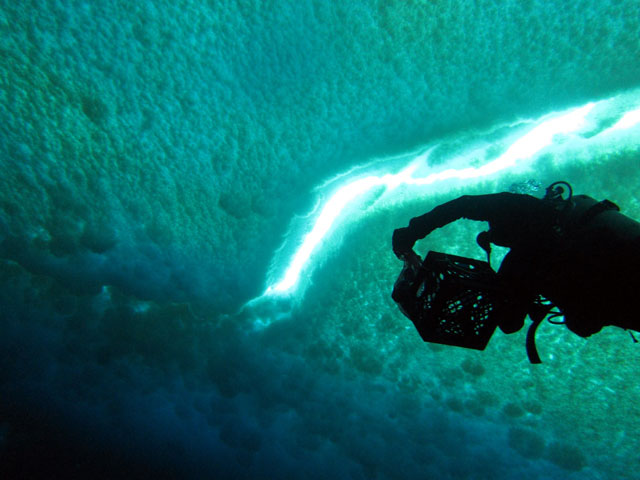|
Feast or famineResearch divers study the table manners of small marine organismsPosted November 30, 2012
Exploring the deep ocean requires expensive research vessels and complex instruments to retrieve samples from the seafloor — not to mention the trauma of yanking a marine organism up 4,000 meters from the bottom of the ocean. So why travel down so far when you can do the same sort of research at a mere 20 meters in the sub-freezing waters of Antarctica? That’s what brought scientists Andrew Thurber and Rory Welsh It’s mostly famine for the animals on the seafloor, except for the occasional pulse of food that comes when phytoplankton (microscopic marine plants) bloom in the surface waters in the summer months and then die, falling to the ocean bottom like scattered breadcrumbs. “This big input of food and then no input of food is pretty much what the rest of the planet sees,” said Thurber, a postdoctoral researcher in the College of Earth, Ocean, and Atmospheric Sciences at Oregon State University One of the chief goals of the National Science Foundation “The number of animals on the seafloor [in McMurdo Sound] is the highest on the planet,” Thurber noted. The marine biologist is also interested in how bacteria are involved in the seafloor food cycle. There is evidence that when food is plentiful, the bacteria actually compete at a disadvantage with the worms and other organisms in the seafloor sediments. But during the many months when food is scarce, research suggests the bacteria turn generous, entering into a symbiotic relationship with the more complex organisms and helping them consume the less readily digestible organic compounds still available. Thurber likens the process to how bacteria help cows digest the fiber that makes up grass and hay. “As soon as the food runs out, they turn into this facilitating capacity, allowing the community to persist,” Thurber explained from McMurdo Station where he and OSU graduate student Welsh were wrapping up the first half of their field season in Antarctica. The pair arrived at McMurdo Station in August when winter darkness still prevails. The timing was deliberate to mimic the lightless conditions that exist in the deep ocean. It’s also a period when little or no food is available to the benthic communities. In other words, the researchers wanted to collect specimens and conduct experiments when the sea critters were most famished. But they found something unexpected on their many dives through the sea ice into the freezing waters: Food was available in the form of benthic diatoms, a major group of algae that makes up phytoplankton blooms in the light-filled euphotic zone of the ocean, but also grows on the seafloor. 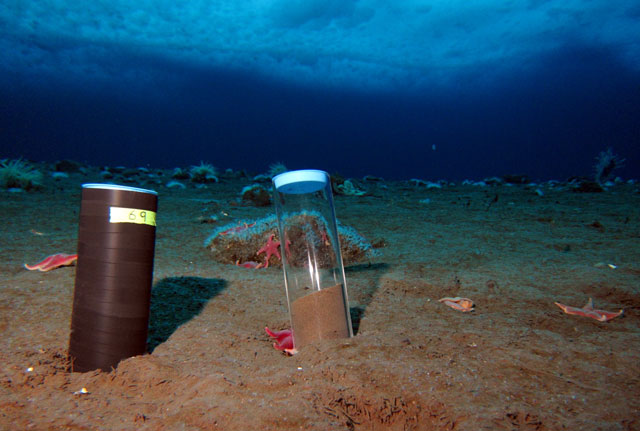
Photo Credit: Andrew Thurber
An experiment left on the seafloor to determine photosyntheric activity among the benthic community.
Such biological growth had been nearly absent a decade ago when Thurber was last at McMurdo Station and icebergs had blocked McMurdo Sound, causing the sea ice to thicken and affecting the biological rhythms below. However, in the last couple of years, normalcy has returned, with the sea ice blowing out of the region at the end of each summer season. “This year there’s actually a ton [of benthic diatoms],” Thurber said. “We’ve seen an incredible bloom, so we’ve been able to measure the amount of in situ production and compare that to that phytoplankton bloom that’s coming in. “It’s not what we were expecting to do, but it’s become a crucial part of the project,” he added. One of the main experiments based on this discovery involves Thurber and Welsh, both cold-(really cold)-water divers, collecting small cores of sediment from the seafloor. One tube has been blacked out with electrical tape, which prevents photosynthesis by diatoms. The other small core of ocean mud is clear. They leave the experiment alone in the water for 24 hours. The scientists then measure the amount of oxygen in each microcosm. The clear core will contain more oxygen from photosynthesis, so that by subtracting the oxygen measurement from the blackened tube, they can determine how much photosynthetic energy is being produced. Their calculations should eventually reveal the amount of food that is produced right at the seafloor, as well as additional details about the carbon cycle. The animals and bacteria also play a role in what scientists call “carbon sequestration,” and determine whether the carbon consumed is buried for geologic time or released back into the ocean and the atmosphere on much shorter timescales. Back in the lab at McMurdo Station, the researchers work on experiments with specimens that provide data on how the seasonal pulse of food from phytoplankton blooms change the dynamics of the food web. There are three scenarios: no food, a reduced regime of about 70 percent based on the conditions caused by the icebergs a few years ago, and the business-as-usual conditions. A similar series of experiments run concurrently but all the bacteria are removed in those scenarios. Thurber said it turns out that antibiotics work exceedingly well against the polar bacteria, which haven’t built up a resistance like other microbes where antibiotics have been heavily employed. Thurber said it would be a year before full results from the project are available, as much work remains to be done back at his university lab. But the macrofauna in both series of experiments — with and without the bacteria — appear to operate at similar levels. “That suggests the bacteria may not be competing very well with the animals because the macrofauna are [reacting at the same level] regardless of the amount of food added. That was a surprising result,” he explained. Expect more surprises to come. Thurber will briefly leave McMurdo Station this month but return later in the season to collect additional specimens after the phytoplankton blooms at the height of the summer. Follow their research at Cold Dark Benthos NSF-funded research in this story: Andrew Thurber, Oregon State University, Award No. 1103428 |



For USAP Participants |
For The Public |
For Researchers and EducatorsContact UsNational Science FoundationOffice of Polar Programs Geosciences Directorate 2415 Eisenhower Avenue, Suite W7100 Alexandria, VA 22314 Sign up for the NSF Office of Polar Programs newsletter and events. Feedback Form |

